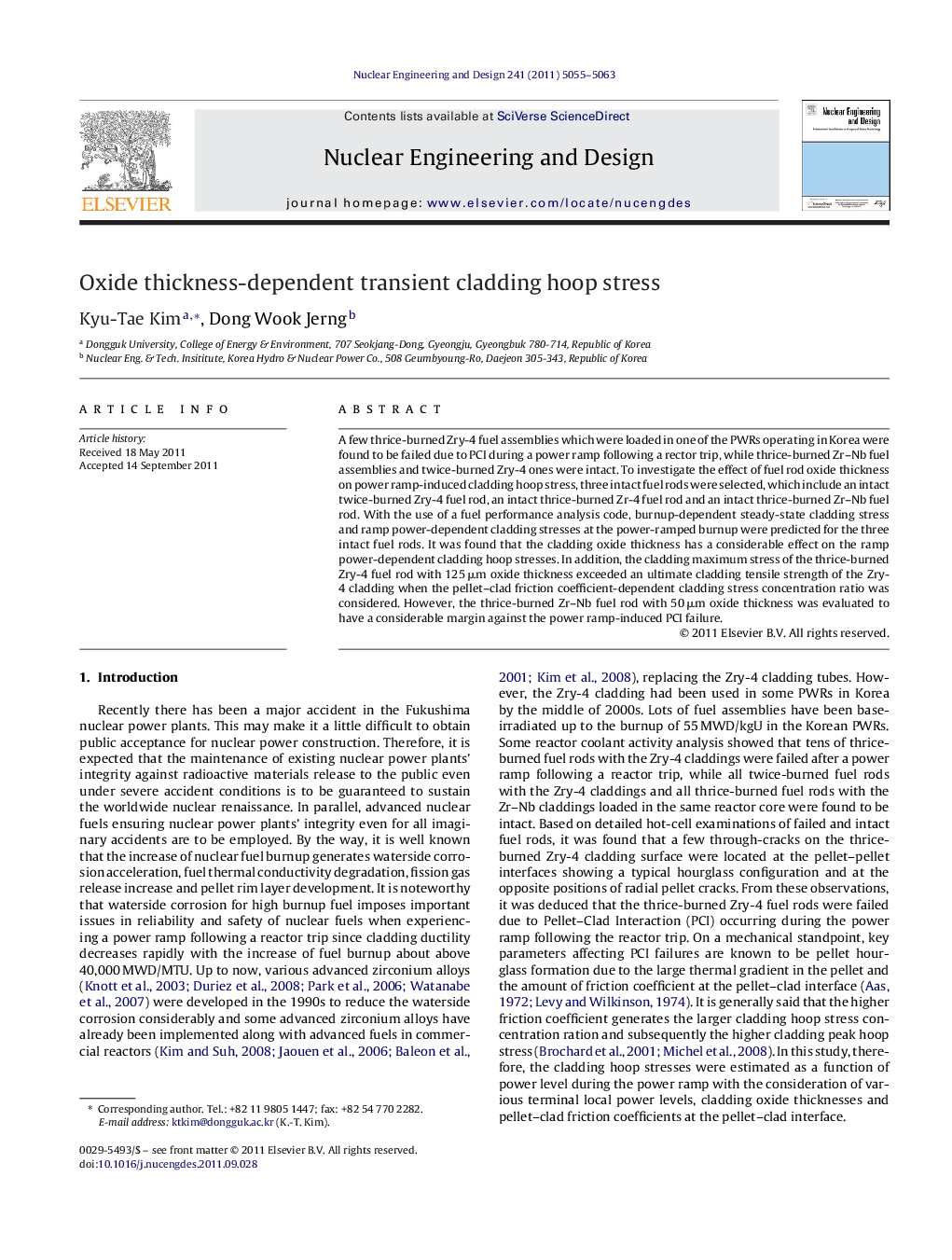| Article ID | Journal | Published Year | Pages | File Type |
|---|---|---|---|---|
| 297618 | Nuclear Engineering and Design | 2011 | 9 Pages |
A few thrice-burned Zry-4 fuel assemblies which were loaded in one of the PWRs operating in Korea were found to be failed due to PCI during a power ramp following a rector trip, while thrice-burned Zr–Nb fuel assemblies and twice-burned Zry-4 ones were intact. To investigate the effect of fuel rod oxide thickness on power ramp-induced cladding hoop stress, three intact fuel rods were selected, which include an intact twice-burned Zry-4 fuel rod, an intact thrice-burned Zr-4 fuel rod and an intact thrice-burned Zr–Nb fuel rod. With the use of a fuel performance analysis code, burnup-dependent steady-state cladding stress and ramp power-dependent cladding stresses at the power-ramped burnup were predicted for the three intact fuel rods. It was found that the cladding oxide thickness has a considerable effect on the ramp power-dependent cladding hoop stresses. In addition, the cladding maximum stress of the thrice-burned Zry-4 fuel rod with 125 μm oxide thickness exceeded an ultimate cladding tensile strength of the Zry-4 cladding when the pellet–clad friction coefficient-dependent cladding stress concentration ratio was considered. However, the thrice-burned Zr–Nb fuel rod with 50 μm oxide thickness was evaluated to have a considerable margin against the power ramp-induced PCI failure.
► This paper presents cladding oxide thickness dependent peak cladding hoop stresses during a power ramp for Zry-4 and Zr–Nb alloys. ► A fuel design code is used to calculate average cladding hoop stresses, simulating a power ramp rate following a trip. ► A pellet–clad friction coefficient of 1.0 is used to estimate peak cladding hoop stresses. ► This stress evaluation shows that PCI-induced cracks are formed on the inner cladding for thrice-burned Zry-4 fuel rods only.
